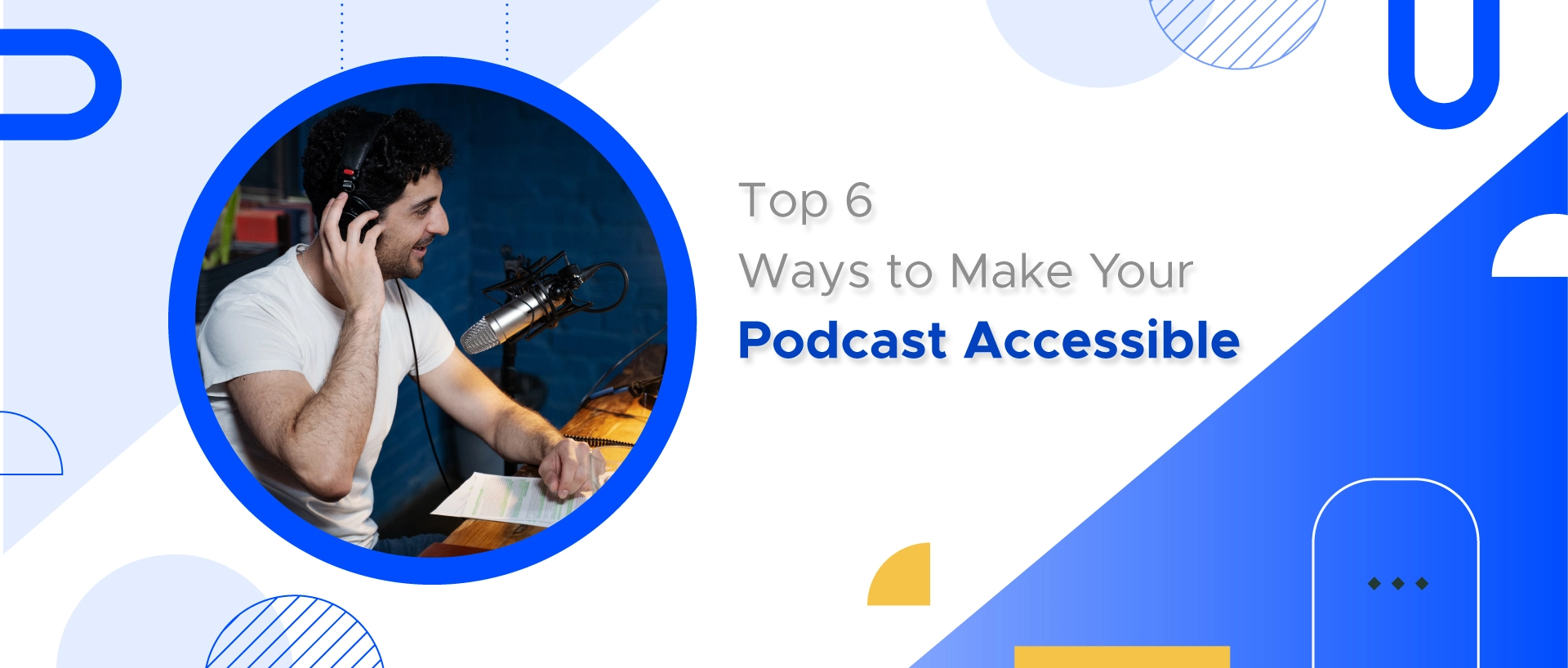
Podcasting has become an increasingly popular medium for sharing content and engaging with audiences. However, to ensure that your podcast reaches a broader and more diverse audience, it's essential to make it accessible to individuals with disabilities. Here, we'll explore six key ways to enhance the accessibility of your podcast and make it more inclusive for all listeners.
Podcast accessibility refers to the practice of creating and distributing podcasts in a way that ensures they are usable and understandable by individuals with a wide range of abilities, including those with disabilities. The goal of podcast accessibility is to remove barriers and provide equal access to audio content for all listeners, irrespective of their physical, sensory, cognitive, or technological limitations.
Podcast accessibility is not merely a matter of compliance with legal requirements; it is rooted in equality, inclusivity, and social responsibility. Here are several reasons why podcast accessibility is vital:
Ensuring that podcasts are accessible means that everyone can access the valuable information and content they contain, regardless of their abilities.
Accessibility promotes inclusivity by breaking down barriers and allowing everyone to engage with and enjoy podcast content.
Many countries have regulations, such as the Americans with Disabilities Act (ADA), that mandate digital content, including podcasts, to be accessible. Non-compliance can lead to legal consequences.
Making podcasts accessible is not just a legal obligation but also an ethical one. It recognizes the right of every individual to access and benefit from audio content.
The audience for podcasts is incredibly diverse, and creating accessible content allows you to reach a broader range of listeners, including those with disabilities.
Now that we understand what podcast accessibility entails Let's explore the six key ways to enhance the accessibility of your podcast:
Transcripts are a fundamental aspect of podcast accessibility. They provide a written version of your podcast's range, making it accessible to individuals who are deaf or hard of hearing. Moreover, transcripts benefit all listeners by offering a searchable, referenceable, and skimmable version of your audio content.
To create transcripts for your podcast episodes, consider the following steps:
In addition to transcripts, closed captions are crucial for video accessibility podcasts or podcast episodes with visual elements. Closed captions provide text descriptions of spoken content and important audio cues, making your podcast accessible to those who are deaf or hard of hearing and those who prefer to read while watching.
To add closed captions to your video podcast transcription, follow these steps:
For podcasts with associated visual content, such as promotional images or episode artwork, including alternative text (alt text) is essential for accessibility. Alt text delivers a brief textual description of images, enabling screen readers to convey this information to visually impaired users.
To add alt text to images related to your podcast, follow these guidelines:
Making your podcast accessible to a global audience involves providing translated content. It is particularly relevant for podcasts with international appeal or diverse subject matter. You can get a wider and more active audience by offering transcripts, subtitles, or even entire episodes in multiple languages.
Here's how to implement translated content for your podcast transcription:
Audio descriptions are essential for making visual content within your podcast accessible to individuals with visual impairments. These descriptions provide narrated explanations of visual elements during the podcast episode, such as graphics, charts, or physical actions.
To add audio descriptions to your podcast, follow these steps:
Regular accessibility auditing of your podcast and its associated materials is essential to ensure that all accessibility features are functioning correctly. This step helps you promptly identify and address issues and maintain a high standard of digital accessibility solutions.
Here's how to conduct an accessibility audit:
Incorporating accessibility into your podcasting efforts is an ethical and strategic choice. By implementing these six key strategies and transcripts, closed captions, alt text for images, translated content, audio accessibility for podcasts, and accessibility auditing; you can make your podcast more inclusive and appealing to a diverse audience. Accessibility not only helps individuals with disabilities but also enhances the overall user experience, increases discoverability, and fosters a sense of inclusivity and community among your listeners. So, take the necessary steps to ensure that your podcast is accessible to all, and you'll open the doors to a broader and more engaged audience.
Share